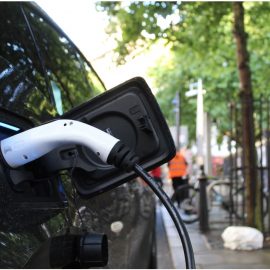
Why is there poverty in the US? Do immigrants have less social mobility? Is family structure a factor?
The US is a prosperous nation. But, poverty has a hold on a significant portion of the population. The stubborn persistence of poverty has given rise to several false explanations for its staying power, including immigration, non-traditional family structures, and a bad work ethic among the poor.
Read more to see how social scientist Matthew Desmond tackles these three myths about poverty in the US.
3 Myths About Poverty
Desmond explores why poverty remains such a persistent feature of American life despite the United States’ economy being large and wealthy enough to raise every adult and child above the defined poverty level. He writes that, since the federal anti-poverty initiatives of the 1960s, there has been little sustained progress against poverty rates despite substantial spending on programs designed to combat poverty over the past 50 years. Desmond addresses three myths about poverty—arguments that he believes fail to explain why so many people remain poor.
| Did the War on Poverty Fail? Although Desmond criticizes federal anti-poverty initiatives as having been largely ineffectual, other writers have a more favorable view of their impact. They argue that the “War on Poverty” programs, such as Medicare, Medicaid, and food stamps, have been successful in significantly reducing poverty rates in the United States—particularly in alleviating poverty among vulnerable groups, such as the elderly and children. They note that the poverty rate among the elderly fell dramatically after the introduction of programs like Social Security and Medicare by providing a steady income stream to retirees and helping to cover healthcare costs—thereby reducing the financial burden on older Americans. Similarly, safety net programs like food stamps and the Earned Income Tax Credit have played a crucial role in reducing child poverty by supplementing the income of low-income individuals and families and helping individuals improve their economic circumstances. |
Myth #1: Immigration
Desmond writes that immigrants are often wrongly associated with higher poverty rates, with immigration levels cited as a reason for the endurance of poverty. However, he notes, this is false: Immigrants exhibit higher levels of social mobility—the ability to move up and down the social and economic ladder—than native-born Americans. Moreover, they typically use fewer state resources and services, and states with more immigrants often have lower poverty rates.
| The Importance of Immigration to the US Economy Many scholars contend that immigration is a vital component of US economic growth. They argue that immigration fuels economic growth and innovation, with immigrants starting businesses, creating jobs, and helping drive technological advancements. Some research suggests that immigrants are more likely to be entrepreneurial, contributing significantly to job creation in the country. Moreover, immigrants typically pay taxes and contribute positively to the economy, ultimately benefiting the overall financial health of the US. Finally, immigrants often take on jobs that native-born Americans don’t desire or can’t fill, thereby filling essential gaps in the labor force. In the agricultural sector, particularly in the US, immigrant labor plays a critical role in harvesting crops. Many native-born Americans aren’t interested in or available for seasonal, labor-intensive farm work. Immigrant workers, often from countries in Latin America, come to fill these jobs during planting and harvesting seasons. Their willingness to work in these roles helps ensure that crops are harvested in a timely manner, contributing to the overall food supply and the agricultural industry’s success. |
Myth #2: Non-Traditional Family Structures
Desmond notes that non-traditional family structures are often held up as a reason for poverty’s endurance. Before we explore Desmond’s arguments for why this isn’t true, it’s worth looking at what advocates of this theory say about the link between family structure and poverty.
The argument is that these non-traditional family structures (for example, single parenthood or out-of-wedlock children) contribute to poverty by reducing economic stability. For example, a single mother must balance working to provide for her family with the responsibilities of childcare. Her income is limited because she can’t work full-time. In this scenario, the non-traditional family structure leads to greater economic instability, stretching the mom’s financial resources thin and making it difficult for her to cover basic necessities like housing, food, and healthcare.
Thus, according to this argument, traditional family structures where two parents share both financial and caregiving responsibilities might provide greater economic stability for the family, as they can pool their resources and share the burden of childcare.
However, Desmond raises a few objections to the theory that non-traditional family structures contribute to poverty. For example, he notes the lack of a link between family structure and poverty in other countries and the fact that marriage and family formation are steps people take after they’ve already achieved a certain level of financial stability. Let’s explore each of his objections in detail.
1) Non-Traditional Families Aren’t Inherently Poorer Anywhere Else
Desmond observes that changes to the traditional married, two-parent family structure aren’t inherently linked to poverty in other countries. If it was a universal truth that non-traditional family structures led to poverty, we would expect it to be a global phenomenon.
Desmond writes that America’s key difference is a lack of childcare options, which governments do offer in other wealthy, industrialized nations. This is what makes it nearly impossible for single parents to work full-time, meaning they’re unable to reach their full earning potential—making it far more likely that they’ll wind up in poverty. In other words, being a single parent isn’t in and of itself what makes someone poor—being a single parent while having to pay for or provide childcare with minimal assistance is what makes someone poor.
2) Poverty Prevents Family Formation
Desmond further writes that those who cite non-traditional family structures as a reason for poverty’s staying power get the causal relationship wrong. People aren’t poor because they don’t start families; they can’t start families because they’re poor.
According to Desmond, it requires a certain level of financial stability to get married in the first place. When individuals or couples are struggling to make ends meet, they may delay or forgo marriage and starting a family because they believe they lack the financial resources to support a family. This can be particularly pronounced in communities with high living costs, limited job opportunities, or inadequate social safety nets. In other words, writes Desmond, marriage and family formation is something people do after they’ve achieved a certain level of financial stability. It’s a marker of prosperity, not a cause of it.
Myth #3: Lack of Work Ethic
Desmond observes that politicians often associate poverty with a perceived lack of work ethic. Desmond also finds this argument lacking. He notes that, during the Covid-19 pandemic, the CARES Act, which among other provisions provided direct cash assistance and expanded unemployment insurance to families living in poverty, demonstrably alleviated poverty rates during the time those benefits were being distributed. He writes that some politicians saw the cash transfers as a negative, believing it disincentivized people from seeking employment if it was more lucrative to stay home and collect government checks. According to Desmond, this is a manifestation of an ideology that the poor must be kept miserable and starving—so they’ll be motivated to work.
If it were true, however, that the benefits from the CARES Act were discouraging work, then we’d expect to see an increase in the employment rate once the benefits expired. But, as Desmond notes, this isn’t what happened at all. The expiration of benefits brought no appreciable increase in the employment rate—unsurprising, since during the pandemic, people likely stayed home from work for other reasons (such as to care for children during school shutdowns or out of fear of getting infected).

———End of Preview———
Like what you just read? Read the rest of the world's best book summary and analysis of Matthew Desmond's "Poverty, by America" at Shortform.
Here's what you'll find in our full Poverty, by America summary:
- Why the United States suffers from so much poverty and inequality
- How some Americans benefit from the poverty of others
- How we can empower the poor and eradicate poverty






